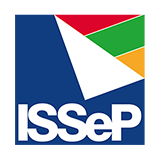Fact file
Following several complaints from residents living near Liège and Charleroi airports, who suspected hydrocarbon deposition on their vegetables, in their gardens as well as in their ponds and swimming pools, ISSeP has developed a very specific analytical methodology to objectify the presence of hydrocarbons. This issue has also been included in the environmental permit for Charleroi airport.
This method makes it possible to take into account only the "current" deposition that could be linked to aviation activity, compared with other approaches such as soil or plant analyses, which make it difficult to avoid any historical contamination.
Origin of pollution
Aircraft de-fuelling does not appear to be a possible source, as this operation is quite exceptional and is only carried out in an emergency due to a serious technical problem with the aircraft.
Health effects
There is no direct risk through inhalation, nor is there any risk of acute poisoning through ingestion or contact, given the quantities of hydrocarbons involved. Nor could this toxicity be chronic, as exposure is not repetitive.
Environmental impact
Most of the hydrocarbon deposition should quickly volatilize, but residual quantities could contaminate the ecosystem, depending on their concentration.
The situation in Wallonia
This type of sampling and analysis has never been carried out in Wallonia and no similar study has, to our knowledge, been carried out elsewhere, either around an airport or in any other environment.
There are no legal limit values or other reference values for hydrocarbon deposition. Given the experimental nature of the methodology and the absence of reference values, additional measurement points located outside the airport site were installed in order to obtain comparison values.
During the period from 2019 to 2022, all the measurements carried out around Charleroi and Liège airports were below the method's limit of quantification.
Measurement methods
HC deposition is collected using a cylindrical glass collector fitted with a glass funnel for 28 days. The collected water is analysed for hydrocarbons (C5-C11 and C10-C40 fractions) using gas chromatography coupled to a flame ionisation detector (GC/FID). This analysis method is usually used for groundwater.







